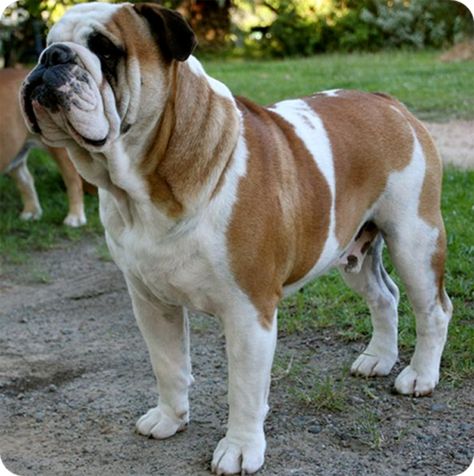
In case you hadn’t heard, the Australian National Kennel Club changed its name to Dogs Australia a few months ago (on October 24, 2021) and rebranded itself to “be more proactive” in communicating to dog lovers nationally. According to its site, the update “demonstrated the scale and strength of the combined member bodies across Australia.”
We learned of the change in the course of determining if the Australasian Bosdog had been accepted by the country’s registry because to be honest, we were utterly unfamiliar with a breed whose name some might say sounds fanciful (read: made up). In fact, we learned that in October 2021 at the ANKC meeting of the Board of Directors, the club formally endorsed the recognition of the Australasian Bosdog as a breed under development as of January 1, 2022.
We couldn’t wait to learn more about the Bosdog, so discover it along with us.
The breed formerly known as the Australian Bulldog got its start about thirty years ago in Queensland when Pip Nobes sought to develop a short faced, smooth coated, thickset, medium sized, family friendly dog easily recognized as a Bulldog, but suitable for the climate found in Australia, New Zealand, and some neighboring islands (an area known as Australasia). Initially, she bred “British Bulldogs” with Boxers, Mastiffs, and Bull Terriers, but also with “Lady Chipolata,” “Penny,” and “Soda,” mixed breed bitches all who had in common a preponderance of the aforementioned breeds in their ancestry. Over time, Nobes limited the breeds in her program to Bulldogs and Bullmastiffs.
Around the same time, Noel and Tina Green had been doing much the same thing, but in the interest of space and time, we move forward to when the Nobes and the Greens connected and occasionally crossed their dogs with an eye to developing a unique breed of Australian Bulldog. The Greens had been calling their dogs “Aussie Bulldogs” to differentiate them from other Bulldog breeds, and when the developing breed appeared on the national TV and radio show, Burke’s Backyard, the result was massive interest not only by the public, but also by fanciers.
The Australian National Kennel Club obviously wouldn’t recognize a breed unless it bred true over time, and the developers did come to determine ideal ratios and a standard. To our knowledge, there are sixth generation AB to AB dogs registered with twelve to thirteen recorded generations behind them. To comply with the ANKC’s rules, and to preserve uniquely developed lines, the breed name was changed to the Australasian Bosdog in 2011, though some people continue to use both names interchangeably.
Critics say that the breed is simply an English Bulldog selectively bred in Australia, and some wonder if the Bosdog is even different enough to be its own breed. They caution that potential owners do their homework and work only with reputable breeders whose dogs have documented lineage (good advice for any breed, actually). As far as we can tell, however, there are differences: The Bosdog has longer legs, is a bit taller, and while stocky, is not as “thick” as an English Bulldog. Its features are less exaggerated, it has smaller ears, and its tail is variable: It can range from being stumpy to being curled, kinked or straight. The Bosdog has been described as having retained the marvelous temperament of its English Bulldog ancestry, and like well bred Bulldogs, can be quite athletic.
As we alluded to earlier, Dogs Australia has taken the breed into its Non Sporting group as one that is under development. We will watch its progress with interest, and share it here in the spirit of education.
Image: Found on Pinterest and happily credited upon receipt of information

I love it. I trust this dog, and I can see he will be OK with small children trying to ride him and push him without any problem.I volunteered a few years at RSPCA York and I had the occasion to know some British Bulldogs, they are calm and stoic, quite stubborn when it comes to move them from a place to another, (like when they decide to rest in the middle of a walk) but soft and phlegmatic.
NO dog should EVER be ridden by children, nor should they be allowed to mistreat dogs